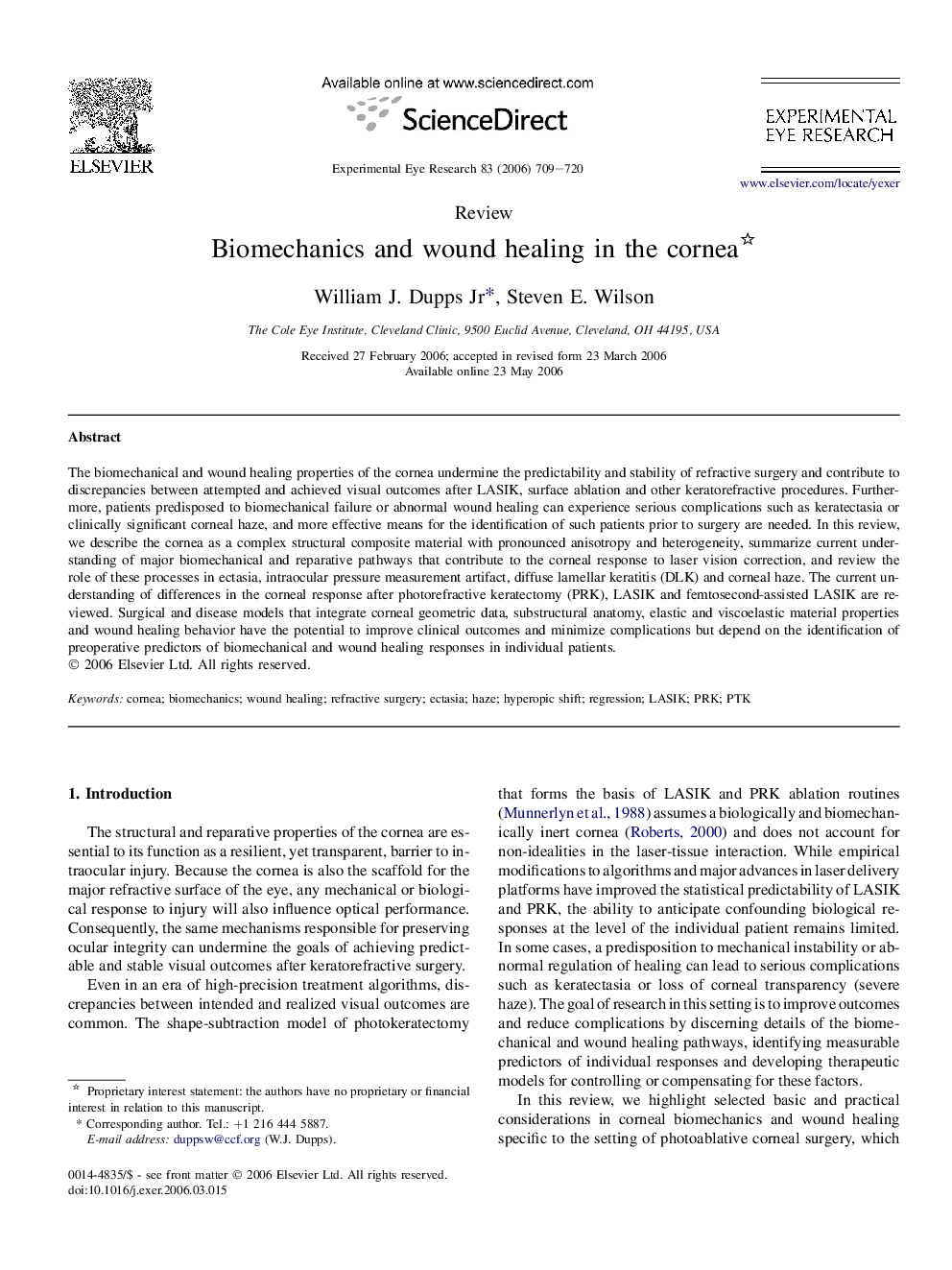| Article ID | Journal | Published Year | Pages | File Type |
|---|---|---|---|---|
| 4013005 | Experimental Eye Research | 2006 | 12 Pages |
The biomechanical and wound healing properties of the cornea undermine the predictability and stability of refractive surgery and contribute to discrepancies between attempted and achieved visual outcomes after LASIK, surface ablation and other keratorefractive procedures. Furthermore, patients predisposed to biomechanical failure or abnormal wound healing can experience serious complications such as keratectasia or clinically significant corneal haze, and more effective means for the identification of such patients prior to surgery are needed. In this review, we describe the cornea as a complex structural composite material with pronounced anisotropy and heterogeneity, summarize current understanding of major biomechanical and reparative pathways that contribute to the corneal response to laser vision correction, and review the role of these processes in ectasia, intraocular pressure measurement artifact, diffuse lamellar keratitis (DLK) and corneal haze. The current understanding of differences in the corneal response after photorefractive keratectomy (PRK), LASIK and femtosecond-assisted LASIK are reviewed. Surgical and disease models that integrate corneal geometric data, substructural anatomy, elastic and viscoelastic material properties and wound healing behavior have the potential to improve clinical outcomes and minimize complications but depend on the identification of preoperative predictors of biomechanical and wound healing responses in individual patients.
